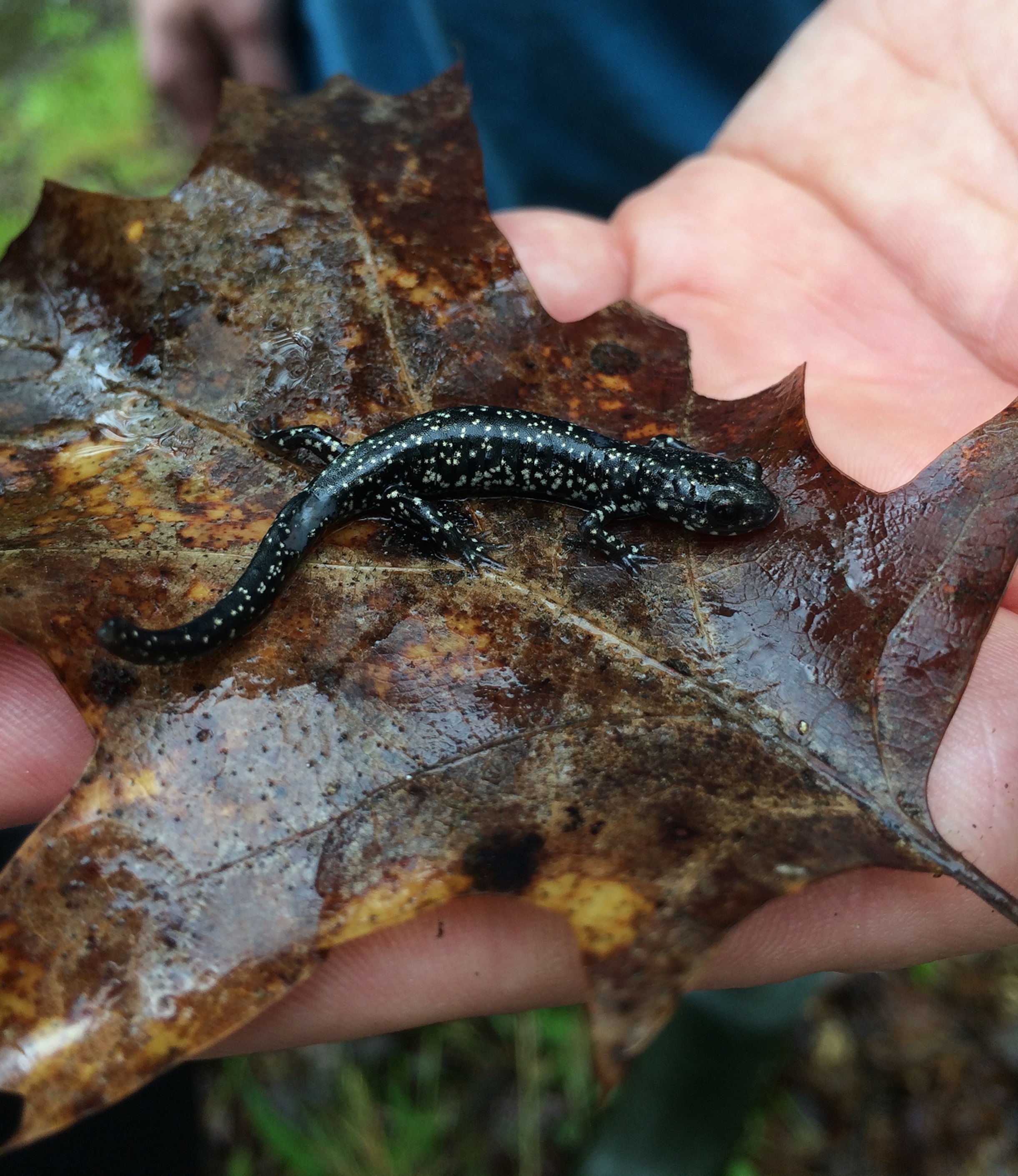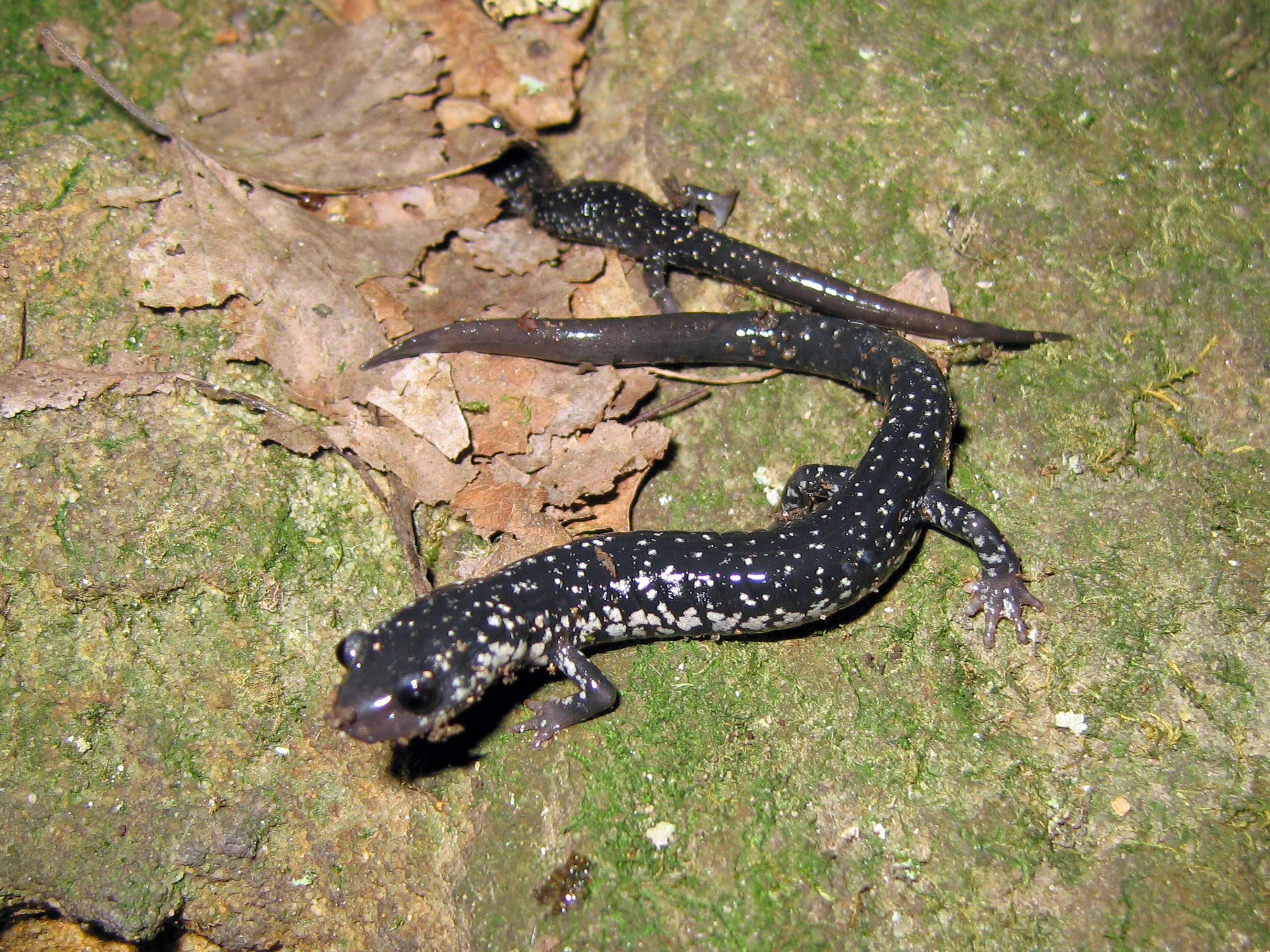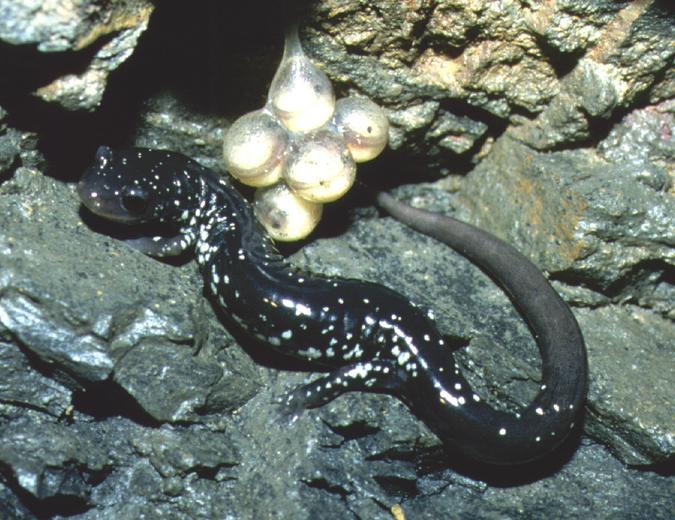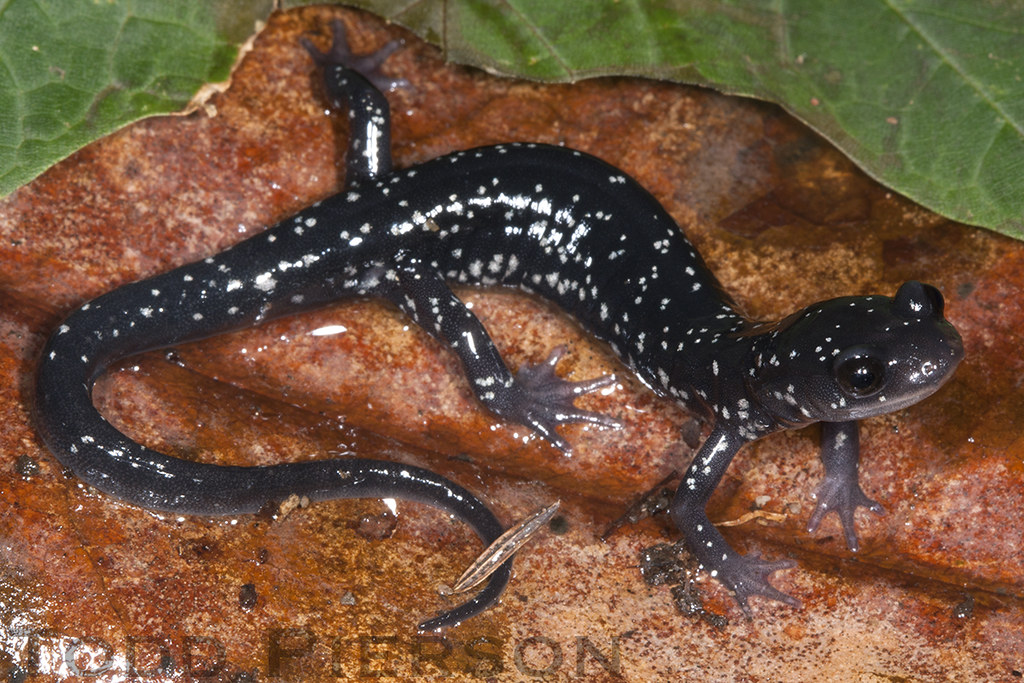Wonders of Wildlife: Slimy Salamander
Slimy Salamander
Other Common Names: Northern slimy salamander
Scientific Name: Plethodon glutinosis
Found in Alabama: Statewide
Diet: Carnivore (eats animals)
|
|
Slimy Salamander
Wikimedia - AugustTulipa13
Click image to enlarge it |
Learn more about...
| CLASSIFICATION |
|
What type of animal am I?
- I am a vertebrate (an animal with a spine or backbone).
- I am cold-blooded, so I cannot control my body temperature.
- I do not have scales, feathers, or fur, so I have smooth skin.
- I breathe through my skin.
- I have 4 legs.
|
Scientists use basic traits to group animals into different taxonomic classes.
For a taxonomic classification chart comparing key traits of common backyard wildlife,
CLICK HERE! |
|
| The Slimy Salamander is an AMPHIBIAN! |
| IDENTIFICATION TIPS |
|
Slimy Salamander
Wikimedia - Greg Schechter
Click image to enlarge it
|
ADULT SLIMY SALAMANDER |
- Range from 4 - 7.5 inches long from head to tail
- Dark bluish black with light metallic colored spots on the back
- Dark on the underside with light spots on the chin.
- Males and females look alike
- Babies look similar to adults
|
| ADAPTATIONS |
| |
| PHYSICAL ADAPTATIONS |
| |
| Slimy salamanders defend themselves using slime: |
- The slimy salamander gets its name from one of its main defenses against threats.
- When threatened, they produce a sticky substance from a gland in their tail.
- This substance can bind the jaws of whateve grabs it.
|
| |
| |
| BEHAVIORAL ADAPTATIONS |
| |
| Slimy salamanders are nocturnal: |
- They are active during the night (nocturnal).
|
| |
| Slimy salamanders use burrows: |
- During warm, dry days, slimy salamanders use burrows or root tunnels to stay cool and damp.
- If a threat is spotted, they use the tunnel as an escape.
- At night when it is cooler, they sit at the entrance of the burrow, waiting to ambush prey (animals that they eat).
- In the winter, slimy salamanders use these burrows to enter a state of hibernation (becoming dormant as if they are in a deep sleep). They emerge and become active in the spring when temperatures become warmer.
|
| |
| Slimy salamanders provide parental care to eggs: |
- Slimy salamanders are primarily terrestrial (live on the land).
- Females do not lay their eggs in the water, so they stay near the eggs to keep them from drying out.
- They also stay near their eggs to defend them against predators (animals that eat them).
|
Slimy Salamander with Eggs
Wikimedia - Stanley Trauth
Click image to enlarge it
|
| |
| LIFE CYCLE |
| |
|
|
| Egg: |
- Females lay an average of 16-17 soft-shelled egg at a time.
- Eggs are laid under logs or rocks, in caves, or in the dirt.
- The females stay with their eggs for 2-3 months until the young have hatched.
|
Baby Slimy Salamander
Flickr - Todd Pierson
Click image to enlarge it
|
| |
|
| Young: |
- The young are independent when they hatch and look similar to the parent.
|
| |
|
|
| Life Span: |
- The average life span for slimy salamanders is 5.5 years.
|
NATURAL
Habitat Needs |
ADULTS |
YOUNG |
| Food |
- Will eat invertebrates (animals without a backbone) including earthworms, snails, spiders, and beetles.
|
| Water |
- Moisture is essential for keeping their bodies moist and hydrated.
- This is especially important because they breathe through their skin.
|
| Shelter |
- Live in moist forested areas, river bottomed hardwood forests, and caves.
- Can be found under rotting logs, rocks, rock crevices, and other debris.
|
| Places to Raise Young |
- Eggs are laid in moist, protected areas such as under rotting logs or rocks.
|
|
BACKYARD
Habitat Needs |
ADULTS |
YOUNG |
| Food |
- Avoid using fertilizers, pesticides, and herbicides which would negatively impact invertebrates (animals without a backbone).
|
| Water |
- Provide a still or slow-moving water source such as a shallow pond.
- Do not remove moist, decaying logs or other natural debris.
|
| Shelter |
- Plant marginal plants around or aquatic plants in sources of water such as a shallow pond.
- Do not remove rocks, rotting logs, or other natural debris.
|
| Places to Raise Young |
- Do not remove rocks, logs, fallen branches, or other natural debris where females might be likely to lay their eggs.
|
|
| ECOLOGICAL ROLE |
| |
|
| Animals play an important ecological role in the health of habitats and ecosystems. |
| |
|
Food Source: |
- Snakes are the main predators (animals that eat them) of slimy salamanders.
- They may also provide a food source for birds and small mammals.
|
| |
|
Soil Dynamics: |
- The burrowing behavior of the slimy salamander may play a role in introducing air to the soil (aeration).
- This process can help move nutrients and water through the soil.
|
INFORMATION SOURCES FOR THIS SPECIES
.






 Wildlife Tag
Wildlife Tag










